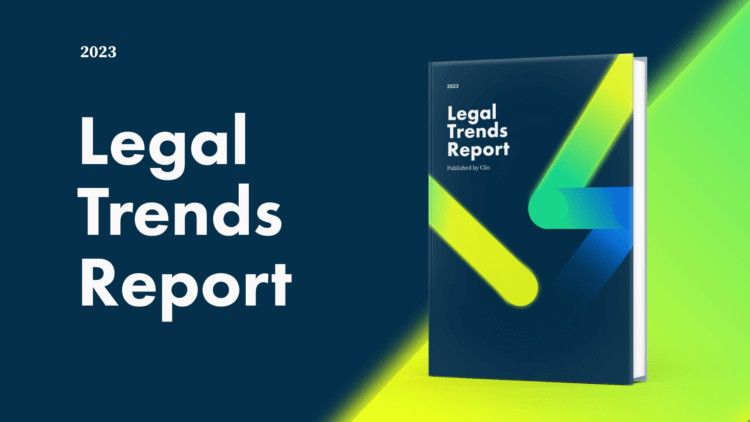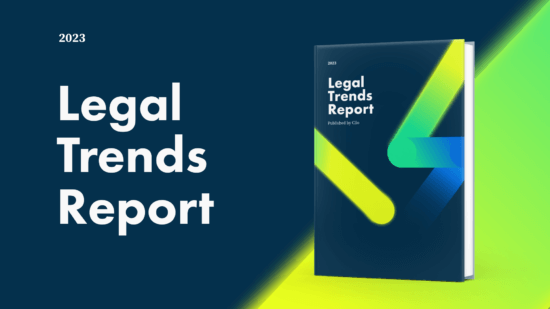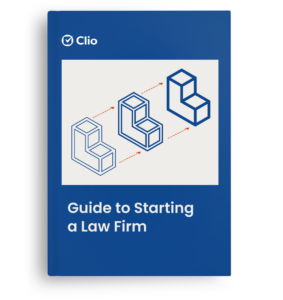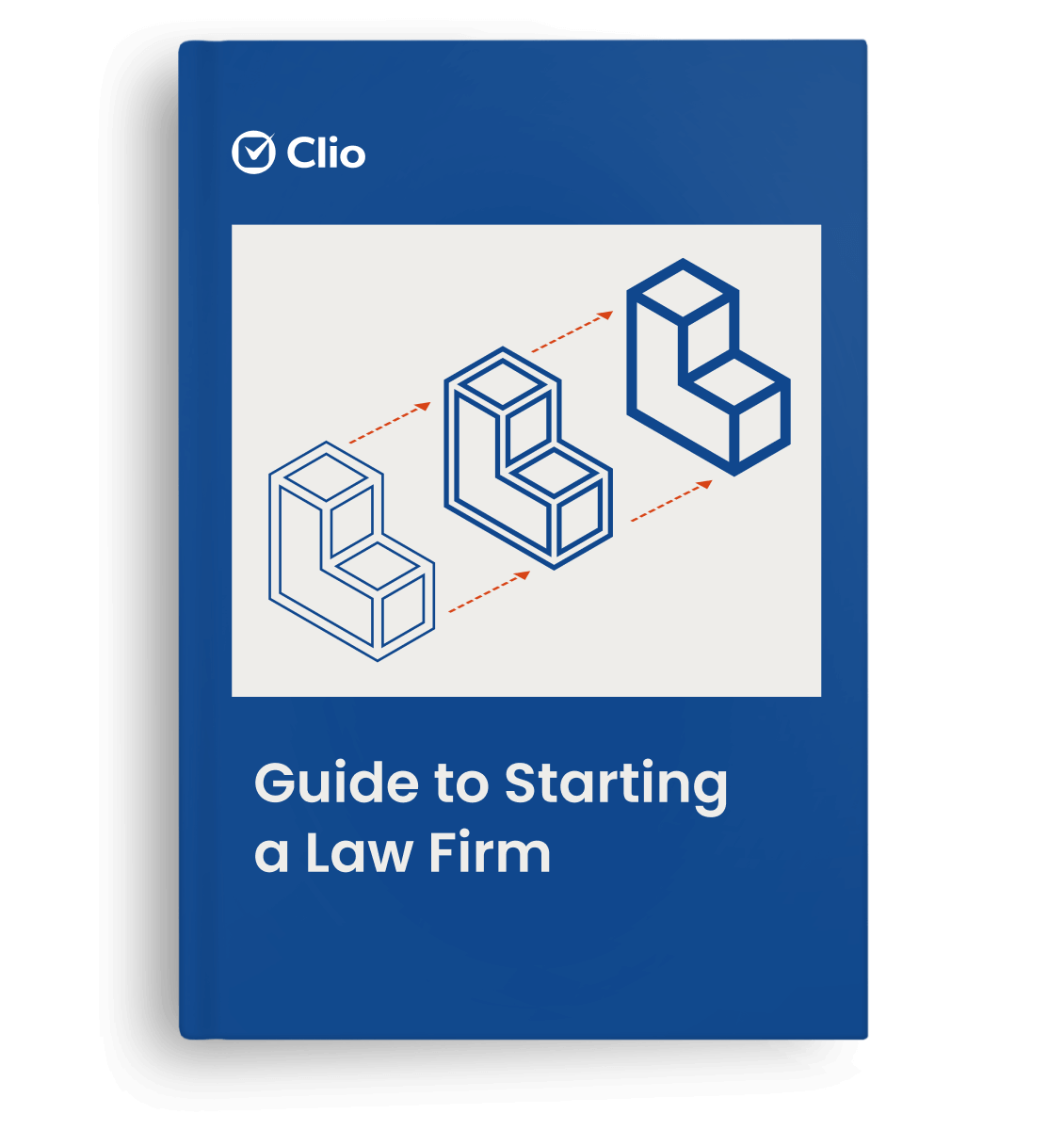As the legal industry’s most in-depth examination into the state of legal practice, the 2023 Legal Trends Report brings together critical insights on the biggest challenges facing modern law firms.
In our fast-paced world, efficiency and effectiveness are of the utmost importance. This is especially true for lawyers. Today, the average lawyer has a heavier caseload and earns more for their firm than in previous years. And, with rapid advancements in new systems and technologies, the legal landscape continues to evolve and law firms find themselves at the cusp of rapid, transformative change.
At the same time, inflation rates have reached their highest levels in decades, putting firms in the tough position of trying to do more with less. It’s therefore important for firms to find the right tools to help them get more done while still improving client service.
About the Legal Trends Report
Now in its eighth year, the 2023 Legal Trends Report includes aggregated and anonymized data from tens of thousands of Clio users and survey responses from more than 1,000 legal professionals and over 1,000 consumers in the U.S. general population.
The 2023 Legal Trends Report explores, among other things, the power of levers—mechanisms that can amplify firms’ efforts. When used strategically in the practice of law, certain business levers can transform a firm’s operations to make them incredibly more efficient and productive.
One such lever gaining traction in the legal industry is generative artificial intelligence (AI), which has the potential to reimagine so many facets of everyday business operations.
Below, we’ll highlight the key insights covered in the 2023 Legal Trends Report, along with steps law firms can take to amplify their impact.
New this year
This year, we’re excited to introduce three updates to our analysis:
Refined analysis of the state of legal practice

Our state of legal practice analysis in Part 1 tracks matters, billable hours, billed dollars, and collected dollars in Clio to gain insights regarding law firm performance. By doing so, we can calculate average utilization, realization, and collection rates for law firms using Clio.
- Utilization rate: how much of a lawyer’s eight-hour day gets put towards billable work.
- Realization rate: how much of a law firm’s billable work actually gets included in client bills.
- Collection rate: how much of a law firm’s bills get paid by clients.
For the 2023 Legal Trends Report, we’ve broadened our analyses of business performance to include data as far back as 2016. This expanded historical view allows us to identify longer-term trends that provide a more robust picture of how far the industry has come—and puts in perspective more recent changes relative to past performance.
New metric: Lockup
This year, we introduced the concept of “Lockup” to measure how quickly law firms get paid after sending their bills to clients. The key concepts in this metric are as follows:
- Realization lockup. This is the amount of revenue that is unbilled at any given time (also known as “work-in-progress lockup”).
- Collection lockup. This is the amount of revenue that is uncollected at any given time (also known as “debtor lockup”).
- Total lockup. This is a combination of revenue held in both realization and collection lockup.
We added Lockup to our roster of metrics because how effectively a law firm bills and collects on its revenue is a crucial component of a healthy business. Minimizing lockup supports a healthy cash flow. By shortening the realization and collection lockup periods, firms can ensure they have more cash on hand and maintain more revenue to invest in future growth.
New insights: Comparative impact of KPI levers
In analyzing several capabilities within the Clio platform, we’ve identified some of the most impactful features that see law firms earn consistently more revenue. In turn, they help illustrate some of the significant productivity gains we’ve seen industry-wide.
New insights: Appetite for AI
By far, the most impactful technological advancement made in the last year has been the public launch of generative artificial intelligence (AI) with the release of ChatGPT. For the first time, law firms have access to technology that simulates cognitive functions for interpreting, summarizing, and creating new perspectives and information with unprecedented speed.
For the 2023 Legal Trends Report, we’ve undertaken an extensive study that looks at new, important perspectives on the use of AI in legal practice. With its rapid public adoption, this data gives insight into where the industry is at in the earliest stages of AI adoption, and where the greatest opportunities lie for future innovation.
You may like these posts
Highlights from the 2023 Legal Trends Report
Below are the top takeaways and insights from the 2023 Legal Trends Report.
Law firms are growing steadily, but need to improve collections
Since 2022, lawyer rates have recovered and, as of the summer of 2023, are on par with consumer price increases. While non-lawyer rates are rising, they are still 8% lower than the CPI.
Legal professionals are opening more files and billing more than ever. On average, they are working over 40% more cases and billing 70% more compared to 2016. Legal professionals are also collecting 72% more than in 2016.
Key performance indicators—i.e., utilization, realization, and collection rates—also indicate that legal professionals are enjoying steady growth and improved performance in 2023. Since 2016, utilization rates have seen an improvement of 32%; however, nearly two-thirds of the workday still goes underutilized with respect to billable client work. Realization rates have also increased by 12%, meaning that firms are invoicing 12% more of their billable hours each year and adding a significant amount of revenue potential. On the other hand, collection rates are anticipated to fall to 87% by the end of 2023. The fact that collection rates haven’t increased as much as utilization and realization rates over the past several years reflects that firms are struggling to get paid.
Measuring how law firms manage cash flow with “lockup”
While realization and collection rates are essential components of a healthy business, they can only take law firms so far. For example, while firms might have great long-term realization and collection rates, they could suffer short-term if they spend too long waiting to invoice or collect on funds.
To overcome these challenges, law firms must also pay close attention to how quickly and consistently they are getting paid. Far too many firms find their revenue held in “lockup”—the period in which billable work has either not been invoiced or collected on.
Lockup consists of three components:
- Realization lockup. This is the amount of revenue that is unbilled at any given time (also known as “work-in-progress lockup”).
- Collection lockup. This is the amount of revenue that is uncollected at any given time (also known as “debtor lockup”).
- Total lockup. This is a combination of revenue held in both realization and collection lockup.
Our analysis indicated that the median realization lockup among law firms is 38 days, and the median collection lockup is 45 days. These calculations indicate a total lockup of 97 days, meaning that, at any given time, law firms have performed over 3 months’ worth of work that has either not been billed out or not been collected.
One proven method of reducing your law firm’s lockup period is using cloud-based legal practice management (LPM) software. Our analysis indicated that Clio customers experienced an average lockup period that was 43 days shorter than the median lockup period. These results are hardly surprising—the online payment solutions offered within an LPM solution like Clio Manage allow firms to largely automate billing and remove roadblocks—like time, disorganization, and user error—that would otherwise delay the billing and collection process.
Who’s to blame for long lockup periods?
While some law practices may be inclined to attribute long lockup periods to their clients (41% say clients simply don’t pay on time and 24% said that too many clients don’t pay at all), clients tell a different story. 15% of clients say that they never received a bill from their lawyer and 28% of those who hired a lawyer said they waited a noticeably long time to receive their bill.
Offering online payments significantly reduces the friction involved for clients in paying their legal bills. In fact, law firms using online payments get paid more than twice as fast. When looking at the number of days it takes to get bills paid, those using online payments have a median of seven days compared to 15 days for those not using online payments.
Our research shows that encouraging clients to pay electronically pays off by bridging this expectation gap. We also see a strong connection between law firms with a high percentage of bills that are paid electronically and how quickly they get paid—firms that collect 75% or more of their payments electronically collect half of their bills within three days of issuing them. This is five times faster than a firm that doesn’t collect electronic payments at all.
Furthermore, paying legal bills by credit card was the most preferred option for paying a lawyer among clients, accounting for almost half of all respondents across all age groups. Only 1 in 5 consumers wanted to pay by check, and even fewer by cash.
KPI levers: Improving how law firms bill and get paid
Outside of the billable work that lawyers and other legal staff perform on a daily basis, being able to capitalize on that work is critical to realizing the time and resources that a firm invests in its clients.
However, many law firms struggle to invoice their work and collect payment. Almost 1 in 3 legal professionals agree that their firm takes too long to get bills out to clients, and less than half say that they bill in a timely fashion.
This year, we’ve uncovered several “KPI levers” you can pull that make a big difference in improving realization and collection rates, many of which are available in Clio.
When looking at the business levers that have the most profound impact on realization rates among law firms, the top three are:
- Email bill sharing. Law firms that emailed bills directly from Clio had realization rates 25% higher than firms that did not (91% compared to 73%).
- Outstanding balances summary. Firms using this feature to follow up with unpaid bills had realization rates that were 26% higher than firms that did not (88% compared to 70%).
- Bulk billing. Law firms using bulk billing have realization rates that are 21% higher than firms not using the feature (94% compared to 78%).
When looking at the business levers that have the largest difference in collection rates among firms, the top three are:
- Outstanding balances summary. Firms using this feature had collection rates that were 5% higher than firms not using it (90% compared to 86%).
- Email bill sharing. Firms using email bill sharing had 3% higher collection rates than firms not using it (90% compared to 87%).
- Trust requests. Firms using this feature had collection rates that were 3% higher than firms not using them (90% compared to 87%).
AI and the future of law

The advent of large language model AI marks the most significant technological development in recent years, and we’re at the precipice of another massive technological advancement that promises to radically enhance the legal profession.
While the 2023 Legal Trends Report analyzes KPI levels that provide insight into some of the most powerful tools that law firms have at their disposal to improve their business, AI promises to be a different type of lever that can get more done faster and take on a much broader set of tasks. The question isn’t whether AI will categorically shift legal work, but how—and what lawyers are doing to prepare for it.
Despite the opportunities provided by AI, on average, lawyers appear hesitant to wholly adopt the technology. These feelings appear to be at odds with the perceptions of the public. For example, clients are more likely than legal professionals to think that:
- AI’s benefits outweigh the costs (32% vs. 19%),
- The justice system could be improved with AI (32% vs. 19%),
- Courts should use AI (27% vs. 17%), and
- AI improves the quality of legal services (32% vs. 21%)
Despite this hesitance among legal professionals, 19% of lawyers are using AI in their practices and 51% want to use it in the future. Furthermore, 71% of legal professionals who want to use AI in the future say they want to do so within the next year.
Where does the data come from?
The Legal Trends Report uses a range of methodological approaches and data sources to deliver the best insights about the state of legal practice and strategies for future growth.
Clio Data
We’ve analyzed aggregated and anonymized data from tens of thousands of legal professionals in the United States. This is behavioral data, which provides important insights about how technology is currently being used by legal professionals—as well as the impact of use on firm performance.
Survey of Legal Professionals
We surveyed 1,446 U.S. legal professionals from May 31-July 20, 2023. The legal professionals we surveyed included lawyers as well as support staff—such as paralegals and administrators—who are engaged in the management side of their practice.
Survey of the General Population
We surveyed 1,012 adults in the U.S. general population. This survey was designed to gauge attitudes, opinions, preferences, and behaviors regarding the legal profession among individuals who have hired lawyers in the past or who may become potential legal clients in the future. This sample is representative of the U.S. population by age, gender, region, income, and race/ethnicity based on the most recent U.S. census statistics.
Ready for more insights? Download your copy of the 2023 Legal Trends Report today.
We published this blog post in October 2023. Last updated: .
Categorized in: Clio








